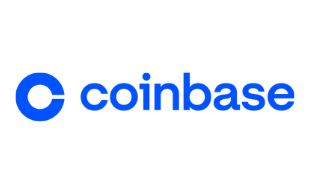CoinSpot was launched in 2013 and has grown to host a user base of over 2.5 million registered customers, at the time of writing. The platform has an intuitive interface, a big range of coins on offer and has never been hacked, making it a popular choice for crypto novices.
Coinbase has been around for even longer, founded in 2012 by American Brian Armstrong before expanding its operations to support Australian customers in 2016. Coinbase has consistently been ranked as one of the highest-volume cryptocurrency exchanges in the world and has a broad range of features suited for beginners and experts alike.
We've compared these exchanges' features to help you choose the best crypto platform for your specific needs.
Round 1: Vital statistics
 |  | |
| Finder Score | 3.8 ★★★★★ | 4.0 ★★★★★ |
| Trading Fee | Maker fee: 0.00 – 0.40% Taker fee: 0.05 – 0.60% | 1% |
| Deposit method | Bank transfer,Cryptocurrency,PayID | Bank transfer,Credit card,Cryptocurrency,Debit card,PayPal |
| Withdrawal Fees | AUD: None Cryptocurrency: Fees vary | AUD: None Cryptocurrency: Fees vary |
| 24/7 support? | Yes | |
| App available? | Yes | Yes |
| Go to site More info | Go to site More info |
CoinSpot is headquartered in Melbourne, Australia, whereas Coinbase doesn't actually have a registered head office – instead, it is a "remote-first" business.
Both CoinSpot and Coinbase are registered with Australian regulatory body AUSTRAC, so comply with anti-money laundering (AML), know your customer (KYC) and counter-terrorism financing (CTF) protocols.
Both exchanges support earning features, giving investors the potential to earn passive income on their assets, as well as the option to place a recurring order. Coinbase's global platform has a number of features that aren't available in Australia, including a credit card with in-built rewards. CoinSpot also allows its user base to purchase crypto "bundles" instead of singular coins, much like a traditional ETF.
Each platform has a multi-token wallet that can be used to store or transact a wide range of cryptocurrencies. The key difference is that Coinbase's wallet is a separate application to its exchange and can be used independently.
Round 2: Supported coins
 |  | |
| Number of tradeable crypto assets | 287 | 536 |
| Go to site More info | Go to site More info |
CoinSpot has a much larger range of coins than Coinbase, nearly doubling the available assets.
Additionally, CoinSpot offers various NFT collections on its platform.
Round 3: Supported fiat currencies
 |  | |
| Number of supported fiat currencies | 7 | 1 |
| Go to site More info | Go to site More info |
CoinSpot is a local exchange, so supports deposits and withdrawals exclusively in AUD.
Coinbase has a global audience and supports a wide range of fiat currencies, such as AUD, USD, GBP and euros.
Round 4: Costs
 |  | |
| Minimum deposits | $2 | $1 |
| Deposit Fees | AUD: None using bank transfer or PayID Cryptocurrency: None | Bank transfer and PayID: None Cash: 2.5% Card: 1.88% |
| Trading Fee | Maker fee: 0.00 – 0.40% Taker fee: 0.05 – 0.60% | 1% |
| Withdrawal Fees | AUD: None Cryptocurrency: Fees vary | AUD: None Cryptocurrency: Fees vary |
| Go to site More info | Go to site More info |
CoinSpot's fees are competitive, particularly for an Australian exchange (which tend to have higher fees). Market orders incur a 0.1% fee on certain cryptocurrencies, with a 1% fee for instant buys. There are no withdrawal or deposit fees for Australian dollars, which is a nice selling point to help save on transaction fees.
Conversely, Coinbase's fees for Australians are comparatively high. Every order on Coinbase has a flat fee of 3.99%, which is one of the poorest rates available for Aussie residents.
With that said, it's worth considering CoinSpot's spreads are much higher than Coinbase's. Spreads are essentially the difference between a crypto's market price and the price it's eventually sold for. Though these rates are constantly fluctuating, CoinSpot's spreads are usually around 3%, compared to Coinbase's 0.5%.
Round 5: Deposit methods
 |  | |
| Deposit methods | Bank transfer, Cryptocurrency, PayID | Bank transfer, Credit card, Cryptocurrency, Debit card, PayPal |
| Go to site More info | Go to site More info |
CoinSpot supports a number of Australian deposit methods for fiat currency. There is a range of free, instant online transfer options available – notably POLi and PayID. A unique deposit method on offer is physical cash deposits, where customers can add money to their CoinSpot account via supported newsagents across the country.
Coinbase also supports AUD bank deposits and withdrawals via PayID as well as card payments.
Winner: CoinSpot
CoinSpot is the winner for Australian customers, largely because it is locally-based and has better AUD support.
CoinSpot's fees are also a bit more competitive than Coinbase's, although when you factor in spreads the 2 aren't worlds apart on value.
Coinbase's limitations for Australian customers do not reflect on the overall quality of the platform. Global residents will likely find the exchange to be more than adequate for the majority of their crypto needs.
It's worth remembering that there's no such thing as a "best" exchange – only exchanges that are "best" for you. The platform you end up choosing will reflect your specific circumstances and you may even end up using features from both.
Frequently Asked Questions
Ask a question
More guides on Finder
-
CMC Invest crypto review
Insightful review of CMC Invest's crypto trading features, security and fees for 2024.
-
Bybit review
We reviewed Bybit, a global crypto exchange most known for its speciality in crypto derivatives.
-
Swyftx review
Swyftx is one of Australia's most beginner-friendly exchanges, with an emphasis on user experience and customer satisfaction.
-
CoinSpot review
Looking to use CoinSpot? See our full breakdown for Aussie traders on CoinSpot's fees, features, sign-up process and more.
-
Digital Surge review
Dive into Digital Surge’s array of uniquely Australian features and discover if the platform’s fees, trading options and interface are right for you.
-
OKX review
A comprehensive review of the OKX cryptocurrency exchange, its features, fees, pros and cons.
-
Binance Australia review
In this deep-dive review we look at the trading and investment options available, and assess what type of cryptocurrency investor Binance is right for.
-
eToro crypto review
If you’re thinking of trading cryptocurrencies on eToro, make sure you check out our comprehensive eToro review first.
-
CoinJar review
Learn how to get some of the lowest fees in Australia with the CoinJar exchange.
-
Independent Reserve review
Read the full review of Independent Reserve if you’re thinking of cryptocurrency trading.

